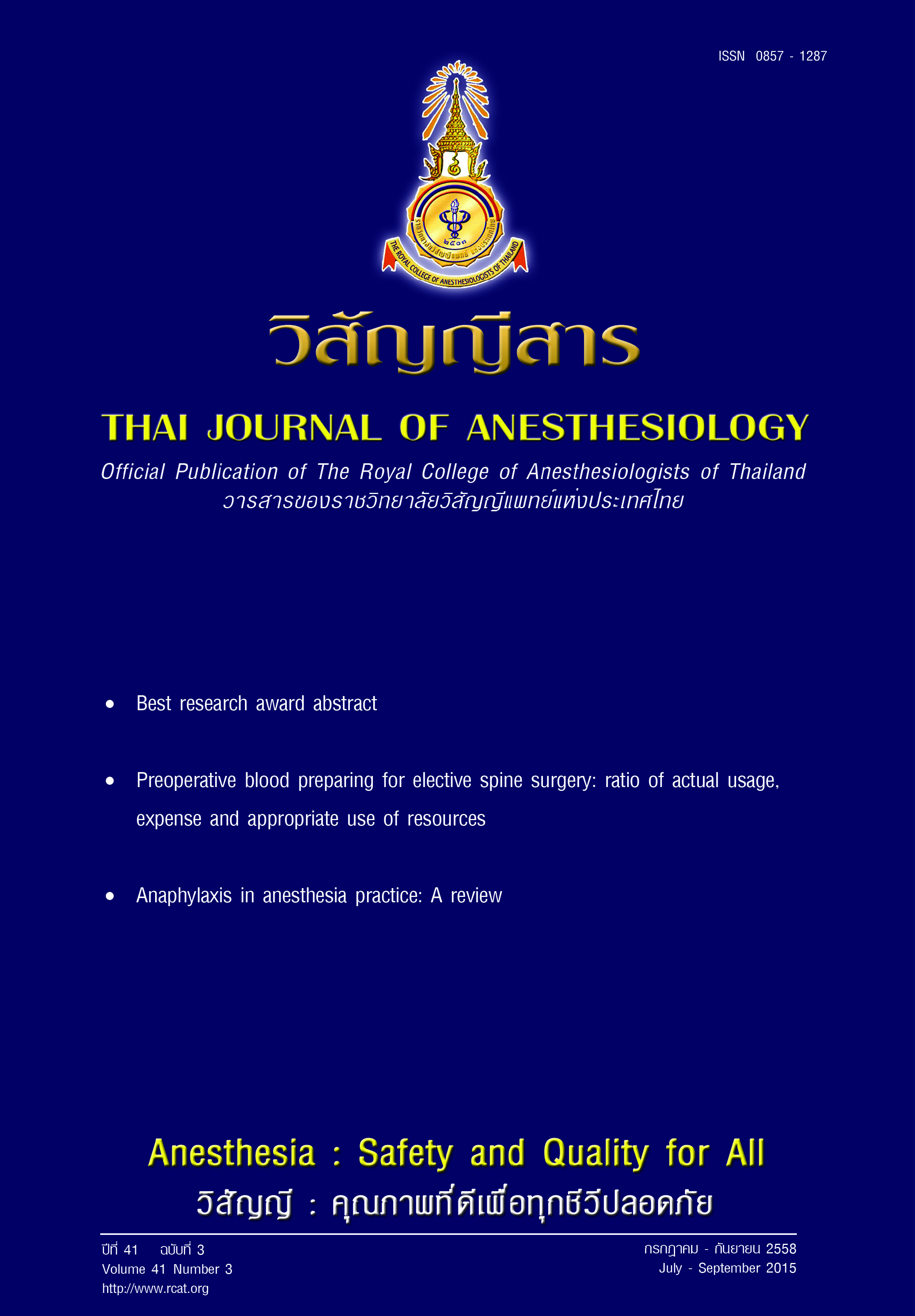Ultrasound Study of the Airway to Predict Endotracheal Tube Size in Anesthetized Pediatric Patients
Main Article Content
บทคัดย่อ
Background: In pediatric patients, having proper size of endotracheal tube (ETT) is crucial. The practice of using age-based formulas to calculate the ETT size is easy, practical and commonly used today. However, the incidence of inappropriate tube size is still judicious, hence increasing risk from changing tube such as trauma and aspiration. Recent studies found that measuring the narrowest transverse subglottic diameter may guide the proper tube size. This study was aimed to proof that selecting ETT size using ultrasound measurement of subglottic diameter is a reliable method and lead to less frequency of changing tube size than age-based formula.
Methods: This study was approved by Human Research Ethics Committee, Faculty of Medicine Siriraj hospital ID SI 165/2014 and was registered at ClinicalTrials.gov (ref: NCT02321956). Written informed consent was obtained from all the parents of participants. Ninety-three patients, age between 1-6 years with normal airway anatomy whom undergoing elective surgery under general anesthesia with endotracheal intubation were enrolled and randomized into 2 groups. Group F was using modified Cole formula to select ETT size (N = 46), and group US was using ultrasound measurement of subglottic diameter to select the ETT size (N = 47). Proper tube size was clinically determined by leakage at airway pressure of 20-30 cmH2O. Both groups were measured transverse subglottic diameter in sniffing position at apnea, inspiratory pressure 10 cmH2O,20 cmH2O before intubation to find correlation with outer diameter of the proper ETT.
Results: The incidence of inappropriate ETT size led to changing ETT in group F was 47.8% (N = 22/46), whereas in group US was 21.3% (N = 10/47) which was significantly different (p < 0.01). There was strong correlation between final ETT outer diameter and cricoid cartilage diameter measured by ultrasound when apnea and positive pressure ventilation provided at 10 cmH2O and 20 cmH2O demonstrated by Spearman’s Rho correlation (apnea rs = 0.901*, p < 0.001, 10 cmH2O rs = 0.913*, p < 0.001, 20 cm H2O rs = 0.914*, p < 0.001). The mean cricoid diameter measured by ultrasound in different ventilation conditions, apnea, positive pressure ventilation 10 and 20 cmH2O, was not statistically significant. The mean time of ultrasound measurement of the airway was 78.25 (±31.9) seconds. There was no complication occurred during the studies in both groups.
Conclusions: Using ultrasound measurement of the subglottic diameter to guide the selection of ETT size reduced the need to change ETT size by providing more appropriate size than age based formula in pediatric patients. There was strong correlation of the subglottic diameter measured by ultrasound and the appropriate ETT size in both groups.


